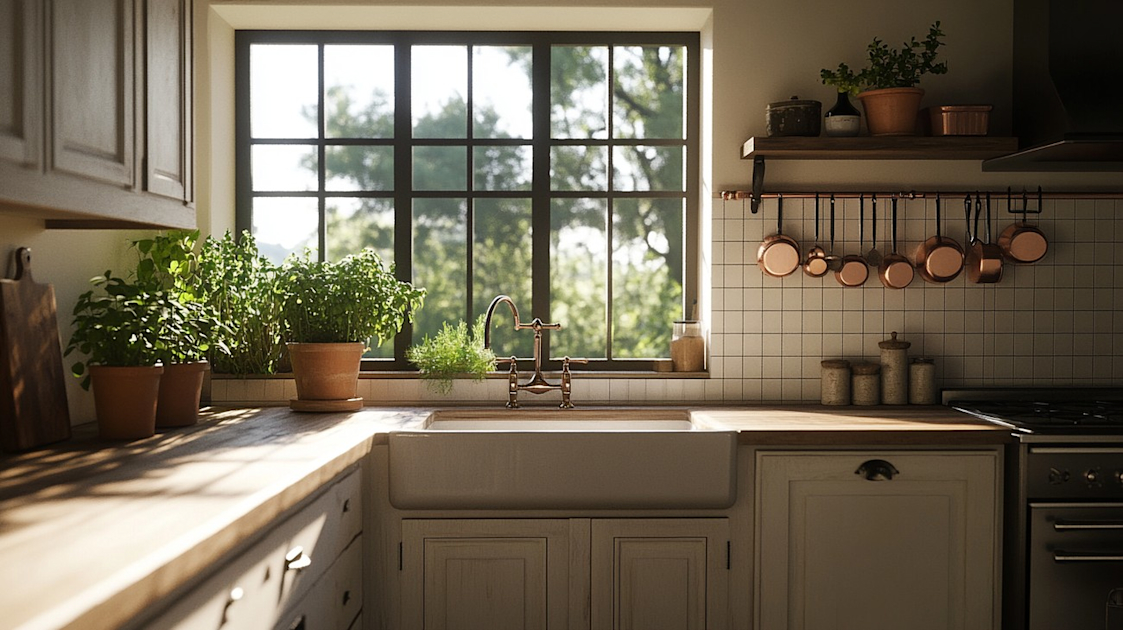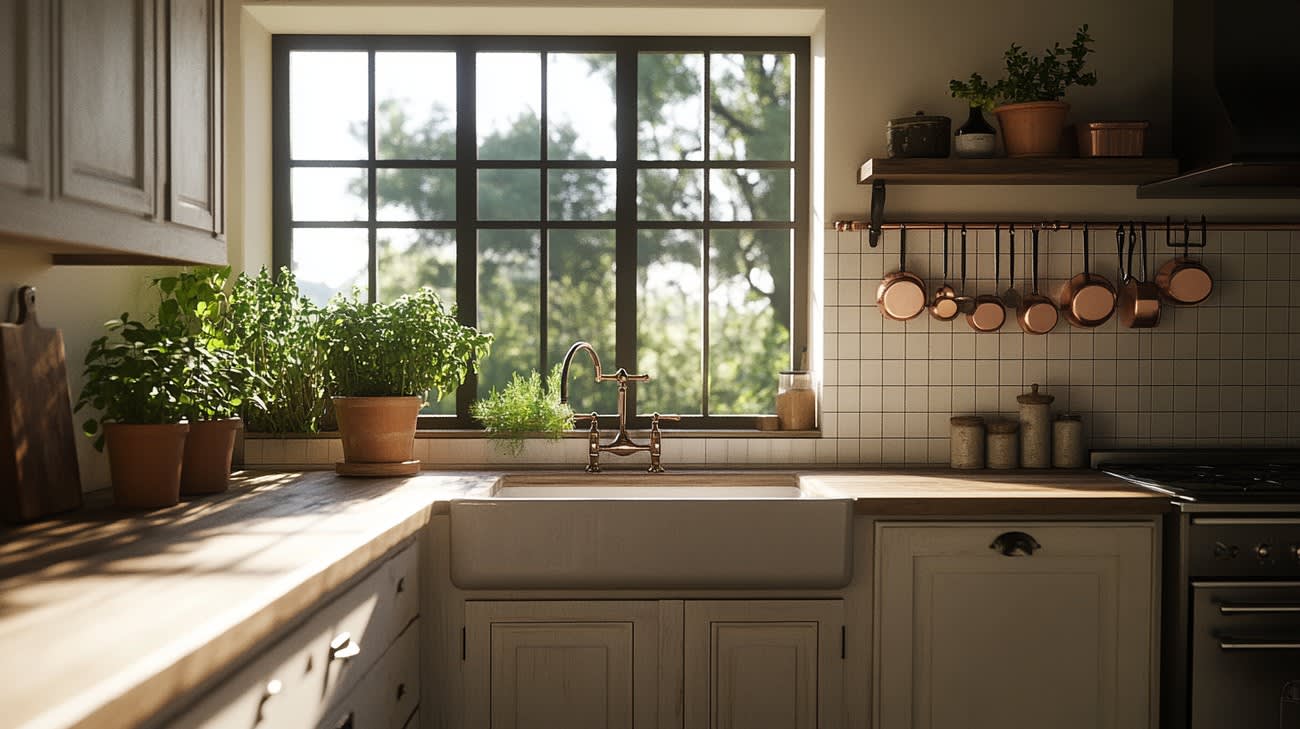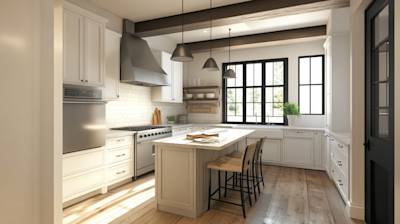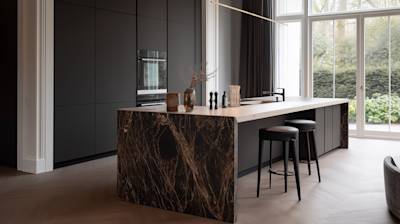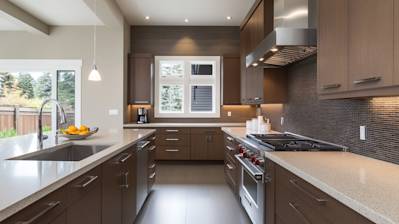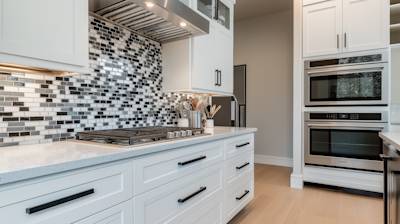The world of interior design is always evolving, and with modern trends leaning more towards traditional or rustic aesthetics, the popularity of the apron sink, also known as a farmhouse sink, has skyrocketed. This post aims to cover everything you need to know about apron sinks: from their history and design to why they are a worthy investment for your kitchen.
The Rich History of Apron Sinks
Before apron sinks became a trend in modern and contemporary kitchens, they had an important role in farmhouses across Europe, particularly in large, rural homes in England and France. The simplicity of their design and functionality made them ideal for hard-working families, where the kitchen was the heart of the home.
Defining Characteristics of Apron Sinks
While apron sinks initially had a simple and practical design, current versions have become more refined and diverse to fit various kitchen styles. Here are some defining features:
- Front-facing design: Typical sinks are dropped into a hole cut into the countertop. With apron sinks, the entire front is exposed, making it a stylish statement piece in your kitchen.
- Depth and width: Apron sinks are usually deeper and wider than your standard kitchen sinks, offering ample space for washing large pots, pans, and other dishes.
- Diverse materials: From fireclay and porcelain to cast iron and stainless steel, these sinks are available in a range of materials, adapting to different kitchen designs and needs.
Why Choose an Apron Sink for Your Kitchen
Apron sinks offer a unique blend of aesthetic and functionality. Here are a few good reasons why you should consider an apron sink in your kitchen:
- Design and aesthetic appeal: An apron sink adds a touch of vintage charm to any kitchen. Because of its large and exposed front face, it becomes a focal point that can elevate the overall look of your kitchen.
- Practicality: Their large dimensions make washing big pots and pans easier. Furthermore, their front-facing design means less leaning over, which can help reduce strain on your back.
- Durability: Apron sinks are crafted for heavy-duty use. Depending on the material, they are resistant to scratches, chips, and stains, offering longevity that standard kitchen sinks might not provide.
Types of Apron Sinks and Material Selection
Apron sinks come in a variety of styles and materials. Choosing the right type depends on your kitchen design, lifestyle, and personal preferences.
- Fireclay apron sinks: These are highly durable, resistant to scratches and stains, and can handle extreme temperatures. They are available in several colors, but the most common is a crisp, beautiful white.
- Stainless steel apron sinks: These sinks are modern and sleek. They are resistant to chipping and cracking, easy to clean, and less prone to bacterial growth.
- Cast iron apron sinks: These sinks are covered with a glossy enamel finish, making them durable and resistant to chipping, scratching, and staining.
Installing an Apron Sink in Your Existing Kitchen
Installation of an apron sink usually requires custom cabinetry or modifications to existing sink cabinets. It is generally advisable to get professional help for installation, as improper fitting can result in leaks and other problems.
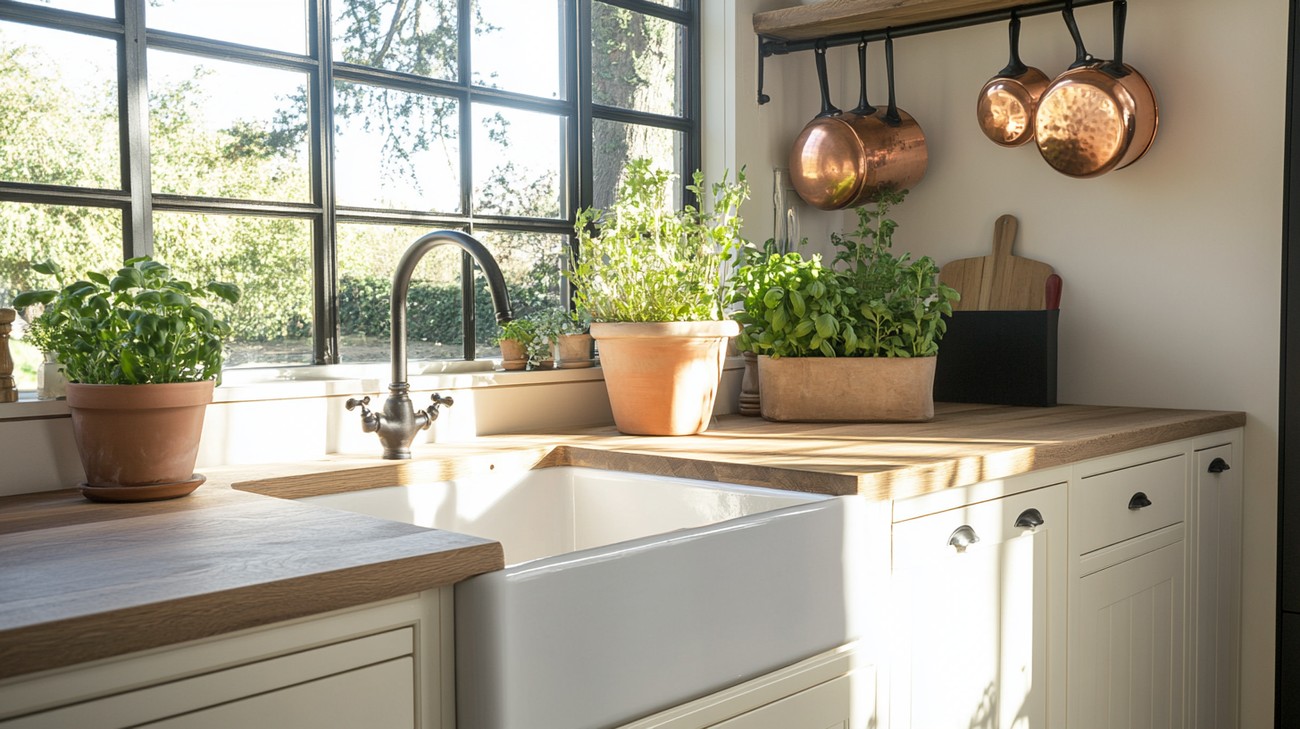
Frequently Asked Questions about Apron Sink
How does an Apron Sink Differ from a Farmhouse Sink?
There is often confusion between an apron sink and a farmhouse sink. Generally, the two terms are used interchangeably as they refer to the same design style. Both have a front panel that juts out from the rest of the sink. The term 'farmhouse' comes from the sink's popularity in farmhouses in the historic times, while the 'apron' describes the design style.
Do Apron Sinks Only Come in One Size?
No, apron sinks come in a variety of sizes to suit different needs. The standard size is often 30 to 36 inches in width, but smaller or larger options can also be found. It's also crucial to consider the depth of the sink, where most apron sinks usually range from 8 to 10 inches deep.
Are Apron Sinks Just for Kitchen Use?
While apron sinks are primarily seen in kitchens, they are not just limited to this area. They can also be used in bathrooms, laundry rooms, and even outdoor dining spaces. The use of an apron sink is not defined by the location but by the functional value and aesthetic preference it can provide.
What Materials are Used to Make Apron Sinks?
Apron sinks can be made from a variety of materials, each with its unique aesthetic and functional properties. Traditionally, they were made from fireclay or porcelain, but modern apron sinks can also be found in stainless steel, copper, cast iron, and even natural stone. When choosing the material for your apron sink, consider its durability, maintenance, and how it complements the overall style of your space.
How Should I Clean My Apron Sink?
The method for cleaning your apron sink depends on the material it's made from. For instance, stainless steel apron sinks can be cleaned using a mild dish soap and a soft cloth, while a fireclay sink might need specific cleaning agents to avoid discoloration. Always refer to the care and maintenance instructions provided by the sink manufacturer to ensure proper care.
Can I Install an Apron Sink Myself?
Although it's possible to install an apron sink yourself, it's a job that requires meticulous planning and careful execution. The front apron is heavier and larger than standard sinks, which may require additional support structures. Also, you need to cut your countertop and cabinets to fit the sink. Therefore, unless you're experienced in DIY home projects, it's usually best to hire a professional.
Pros of Apron Sinks
Aesthetic Appeal
Apron sinks, more commonly known as farmhouse sinks, are renowned for their traditional but timeless aesthetics. They come in a variety of designs, colours, and materials, providing homeowners with options to match their kitchen theme. Whether your kitchen is rustic, modern, or classic, there's an apron sink that can add elegance and sophistication to your space.
Durability
Farmhouse sinks are typically made from durable materials like fireclay, stainless steel, copper, and cast iron. These materials ensure that your sink withstands heavy use over the years. Particularly, fireclay and cast iron sinks are known for their surface strength to resist chipping, cracking, or staining, making them great for years of use.
Large Bowl Size
Apron sinks are usually larger and deeper than standard sinks. They provide ample space to wash large utensils, pans, and even small kids or pets. The large bowl size can make your kitchen tasks more comfortable and efficient to handle.
Front Access
The forward-facing design of the apron sink eliminates the need to lean over countertop edges to reach into the sink, which can ease back strain and make cleaning tasks more comfortable.
Versatility
Apron sinks can fit into any countertop material, be it granite, marble, quartz, or wooden countertops. They can be under-mounted or top-mounted, depending on your preference and kitchen design.
Cons of Apron Sinks
Higher Initial Cost
One of the significant downsides of apron sinks is their higher upfront cost compared to traditional sinks. The cost doesn't include just the sink but also the installation, which can be much more complicated and expensive due to their unique design and weight.
Installation difficulty
Apron sinks are heavier than most other types of sinks. This weight means they need substantial support, which can require customising your cabinetry. The installation can be complex and usually requires professional help, adding to the overall expense and time.
Limited Space in the Cabinet
Due to the larger and deeper dimensions of an apron sink, it will take up a significant portion of your under-sink cabinet space. This can limit room for storage or the installation of a rubbish system directly under the sink.
Potential for Damage
Although most apron sinks are made from durable materials, they're not immune to potential damage. Heavy objects can chip or crack the sink, especially those made of fireclay or cast iron. Stainless steel sinks, while less likely to chip or crack, can scratch more easily.
Difficulties in Replacement
If a farmhouse sink gets damaged and needs to be replaced, the process can be quite arduous and intricate. Because it is built into the countertop and cabinetry, you may have to replace or adjust these as well, adding to the complexity and cost.
Water Spots and Stains
While apron sinks are typically easy to clean because of their wide, open design, they can be prone to water spots and stains, particularly those made of fireclay or stainless steel. This might require frequent cleaning to keep the sink looking its best.
Myths and Misconceptions about Apron Sinks
While apron sinks, also known as farmhouse sinks, offer a unique blend of style and functionality, there are still numerous misconceptions that are circulating. These misconceptions may impact your decision to choose this durable and versatile kitchen feature. Let's dive into some common myths and misconceptions about apron sinks.
Myth 1: Apron Sinks Are Only For Farmhouses And Rustic Kitchens
One of the biggest misconceptions about apron sinks is that they are only suitable for farmhouses or rustic kitchen designs. This misconception arises from the sink's historical roots.
The Root of the Myth
The apron sink came from 17th-century Europe, initially used for practical purposes on farms. It had deep and wide basins designed to accommodate large pots and pans, and often, even babies for bath time! It earned its name as a farmhouse sink then.
The Truth
Today, apron sinks have been reimagined and redesigned to suit various spaces, from traditional to contemporary. While the timeless design of the apron sink does lend itself well to a rustic, country-chic design, it doesn't mean it's only for that style. In modern or minimalistic kitchens, a stainless steel or sleek white apron sink can be a stylish and practical choice.
Myth 2: Apron Sinks are high-maintenance
Another popular myth about apron sinks is that they are high-maintenance and challenging to maintain.
The Root of the Myth
This myth came about due to the first apron sinks being made primarily from porcelain or fireclay. These materials are prone to chipping, staining, and require extra care to keep in good shape.
The Truth
Modern apron sinks are made from a variety of durable materials such as stainless steel, copper, and even treated fireclay. A properly maintained apron sink made from these materials can withstand heavy usage and resist stains and damage. It's crucial to remember, though, even with these modern materials, care is needed, but it's far less daunting than many believe.
Myth 3: Apron Sinks Are Difficult To Install
The installation process of apron sinks is often misunderstood, leading to misconceptions about its complexity.
The Root of the Myth
Installing an apron sink is quite different from installing a traditional sink. Due to its size and the oversized front panel, the countertops and cabinets must be customized to accommodate the sink. This leads to the misconception that installing an apron sink is a complicated process that only professionals can handle.
The Truth
While apron sink installation is a bit more involved, it does not mean it is overly complicated. Most manufacturers provide detailed installation instructions and, in many cases, templates. With the right tools and attention to detail, a handy homeowner can often do it themselves. However, hiring a professional can ensure a perfect fit.
Myth 4: Apron Sinks Are Too Expensive
The notion that apron sinks are more expensive than other sink options is a relatively prevalent misconception.
The Root of the Myth
Apron sinks were once considered a luxury item, primarily due to their solid construction and high-quality materials. They were not only a functional necessity but also a status symbol.
The Truth
While it's true that some apron sinks can be pricey, especially those made from high-end materials, there are also plenty of affordable options available. Prices for apron sinks can vary widely depending on the material it's made from, its size, and the manufacturer. The more important thing is to invest in a high-quality sink that meets your particular needs and aesthetic preferences. It could be more cost-effective in the long run, considering their durability and timelessness.
Myth 5: Apron Sinks Are Not Practical
The last myth we will debunk is that apron sinks are more about style than functionality.
The Root of the Myth
The unique style and charm of apron sinks often overshadow their practical benefits. As a result, many people believe they offer more style than substance.
The Truth
In reality, apron sinks are highly functional. Their deep basins provide more room for washing large pots, pans, and even pets! The front of the sink extends past the edge of the countertop, reducing the strain on your back by reducing the need to lean over as much when washing dishes. This style also effectively reduces water spots and drips on the countertop and cabinets.
In conclusion, while there are many misconceptions about apron sinks, when you look closer, you'll find that they are stylish, functional, and an excellent addition to any kitchen design. Regardless of your kitchen style or budget, there is an apron sink that can work for you. With a clearer understanding of these myths, you are now in a better position to decide whether an apron sink is right for your kitchen.
Summary
So, you've spent some time looking into apron sinks and might still be wondering if it's the right choice for you. It all comes down to your kitchen's style, practicality, and personal preference. An apron sink can add a timeless feel and unique aesthetic to any kitchen. They excel in serving functional needs too. So, whether it's their head-turning looks or their ease to use, apron sinks often become a favorite part of the kitchen by many homeowners.
The beautiful thing about an apron sink is that it fits comfortably in many kitchen styles. Whether you're aiming for a rustic farmhouse taste or a sleek modern vibe, this sink seamlessly adapts. However, keep in mind it's not just about style. These sinks are known for their deep and wide basins, perfect for handling large pots and pans. Whenever you have big cleanups, the apron sink proves itself a workhorse.
Lastly, an apron sink offers more than meets the eye. It might seem like just another kitchen fixture, but this type of sink often acts as the centerpiece of the kitchen. They are strong, durable, and their front-facing design reduces strain from leaning over. While some might feel the cost is a bit on the higher side, many homeowners find that the apron sink is well worth the investment for its combination of style, durability, and comfort.
About GVD Renovations & Remodeling
Meet GVD Renovations & Remodeling - your reliable, local solution for all your home renovation needs. Nestled in the heart of Roseville, CA, we're known for our superior craftsmanship, exceptional service, and the unique touch we add to each project. At GVD, we don't just renovate homes, we transform them. With years of experience under our belt, we specialize in a multitude of renovations including kitchen and bathroom remodels, siding installations, and window replacements. Let's make your dream home a reality, together!
Tags: kitchen, farmhouse, undermount,



